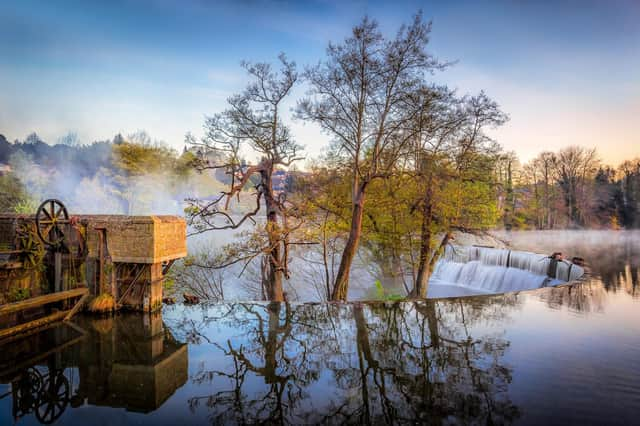UNESCO World Heritage Day celebrates stunning Derwent Valley Mills: The birthplace of the Industrial Revolution


A special day to commemorate UNESCO World Heritage sites will take place next week.
World Heritage Day on Thursday, April 18, 2024, will commemorate important sites around the world.
Advertisement
Hide AdAdvertisement
Hide AdThe only local World Heritage site - there are only 33 in the entire country but only one in the East Midlands - is The Derwent Valley Mills, which makes it a big deal and a great destination for a visit.
Although there don’t appear to be any events scheduled on World Heritage Day at the Valley, people can still visit.
You can explore events at one of the sites in the Valley, Cromford Mills by clicking here.
Advertisement
Hide AdAdvertisement
Hide AdIt would make an excellent trip on a warm spring day for enthusiasts of cycling, walking, and fans of nature too.
Set in stunning Derbyshire countryside, the Derwent Valley Mills World Heritage Site follows the River Derwent from Matlock Bath in the north to the city of Derby in the south.
It includes a series of river weirs, historic mill complexes, villages, rail and canal ways.
These locations and transport connections all provide a fascinating insight into life at the time of the Industrial Revolution, much of which originated in the Georgian Period.
Advertisement
Hide AdAdvertisement
Hide AdWhere is The Derwent Valley Mills World Heritage Site and how to get there
The Derwent Valley Mills was designated as a World Heritage Site in 2001, having been described as the birthplace of the Industrial Revolution.
There are several ways to access the Valley site, you can find out more about transport links by clicking here.
There are 11 key highlights of the Derwent Valley Mills, here they are.
Cromford Mills
Cromford Village
Masson Mills
Willersley Castle
Cromford Wharf
Cromford Canal
Birdwood
High Peak Junction
Leawood Pumphouse
Aqueduct Cottage
John Smedley’s Mill
What is UNESCO?
Here’s a little bit of history.
You may have heard the term UNESCO but do you know what it means?
Advertisement
Hide AdAdvertisement
Hide AdUNESCO is an acronym for United Nations Educational, Scientific and Cultural Organisation.
Their World Heritage Sites are places of importance owing to cultural or natural heritage as described in the UNESCO World Heritage Convention, established in 1972.
So in the case of the Derwent Valley, its 18th- and 19th-century cotton mills and wider industrial landscape were deemed of high historical and technological interest.
Comment Guidelines
National World encourages reader discussion on our stories. User feedback, insights and back-and-forth exchanges add a rich layer of context to reporting. Please review our Community Guidelines before commenting.
